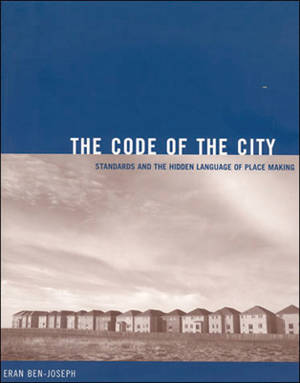
- Afhalen na 1 uur in een winkel met voorraad
- Gratis thuislevering in België vanaf € 30
- Ruim aanbod met 7 miljoen producten
- Afhalen na 1 uur in een winkel met voorraad
- Gratis thuislevering in België vanaf € 30
- Ruim aanbod met 7 miljoen producten
Omschrijving
Standards and codes were meant to bring order and safety to the city building process. But now, Ben-Joseph argues, these accumulated rules and their widespread application illustrate a disconnect between the original rationale for their existence and their actual effect on the natural and human environment. To discover how this separation of codes from local conditions came about, he looks at the origins of urban standards and their use, from early civilization through the rapid urbanization of the nineteenth century. He provides examples that demonstrate how standards have shaped residential developments and reshaped the natural landscape. And he considers alternatives for the future--innovation and de facto deregulation by private developers, new design technologies, and place-based regulations reflecting local conditions. Standards, writes Ben-Joseph, will continue to shape the built environment, but they must be flexible enough to allow for innovation and contribute to the development of sustainable and desirable communities.
Specificaties
Betrokkenen
- Auteur(s):
- Uitgeverij:
Inhoud
- Aantal bladzijden:
- 264
- Taal:
- Engels
- Reeks:
Eigenschappen
- Productcode (EAN):
- 9780262524452
- Verschijningsdatum:
- 18/11/2005
- Uitvoering:
- Paperback
- Formaat:
- Trade paperback (VS)
- Afmetingen:
- 179 mm x 227 mm
- Gewicht:
- 503 g

Alleen bij Standaard Boekhandel
Beoordelingen
We publiceren alleen reviews die voldoen aan de voorwaarden voor reviews. Bekijk onze voorwaarden voor reviews.









